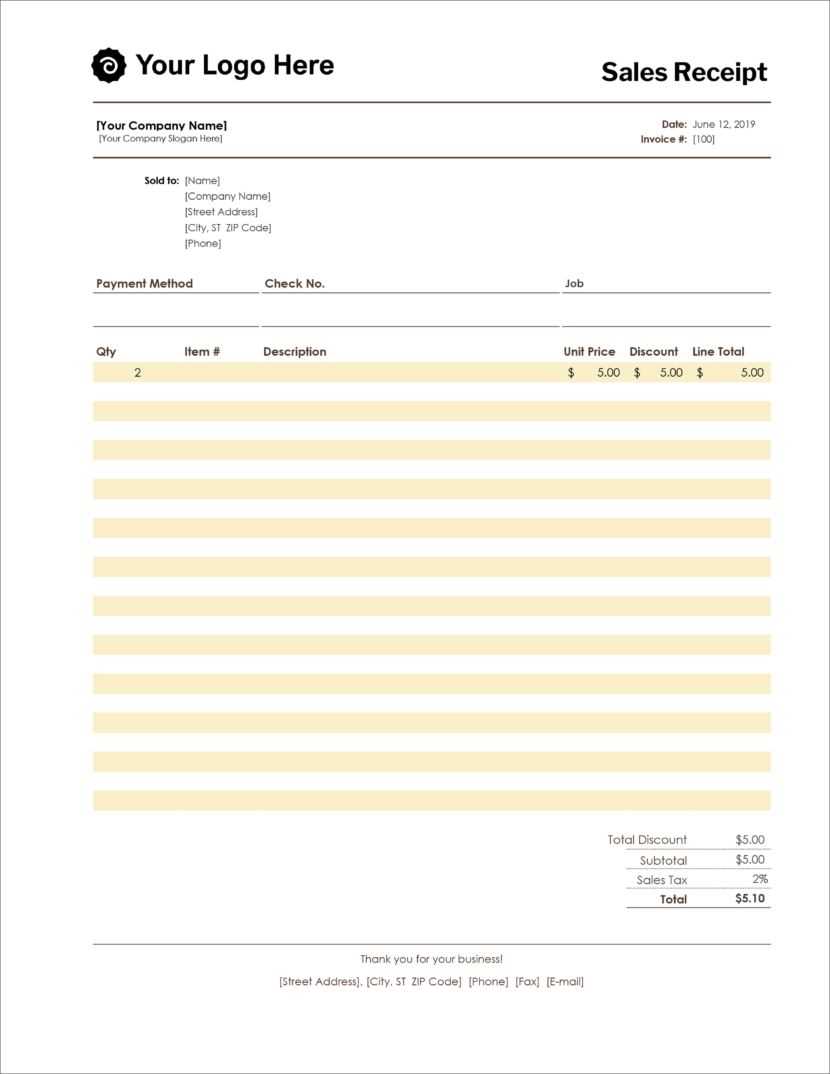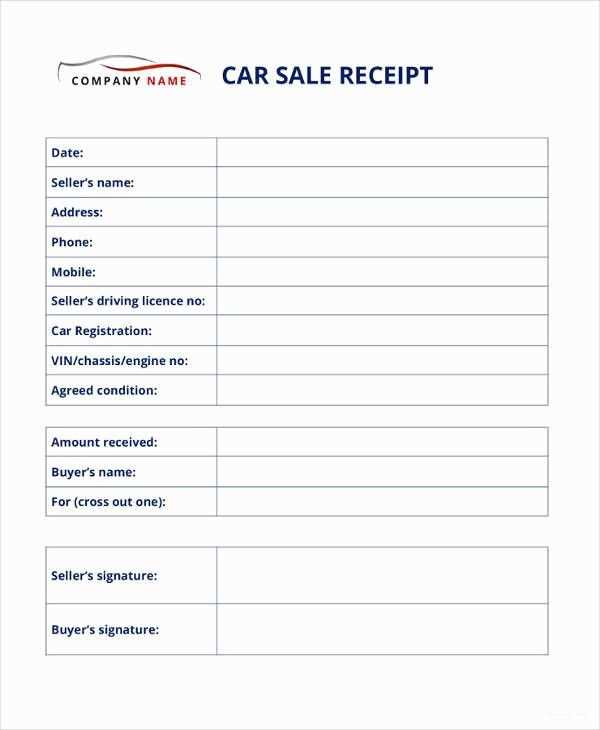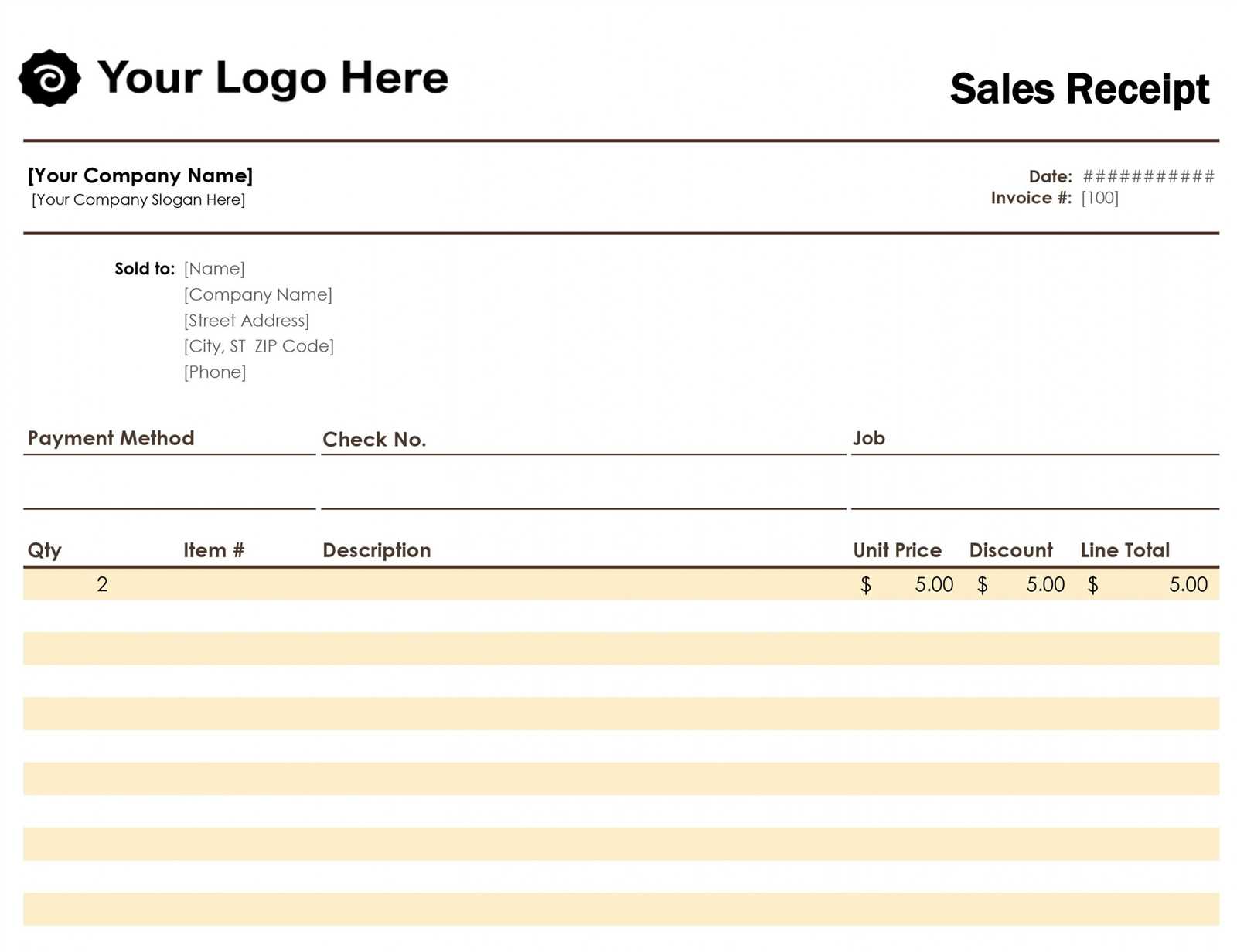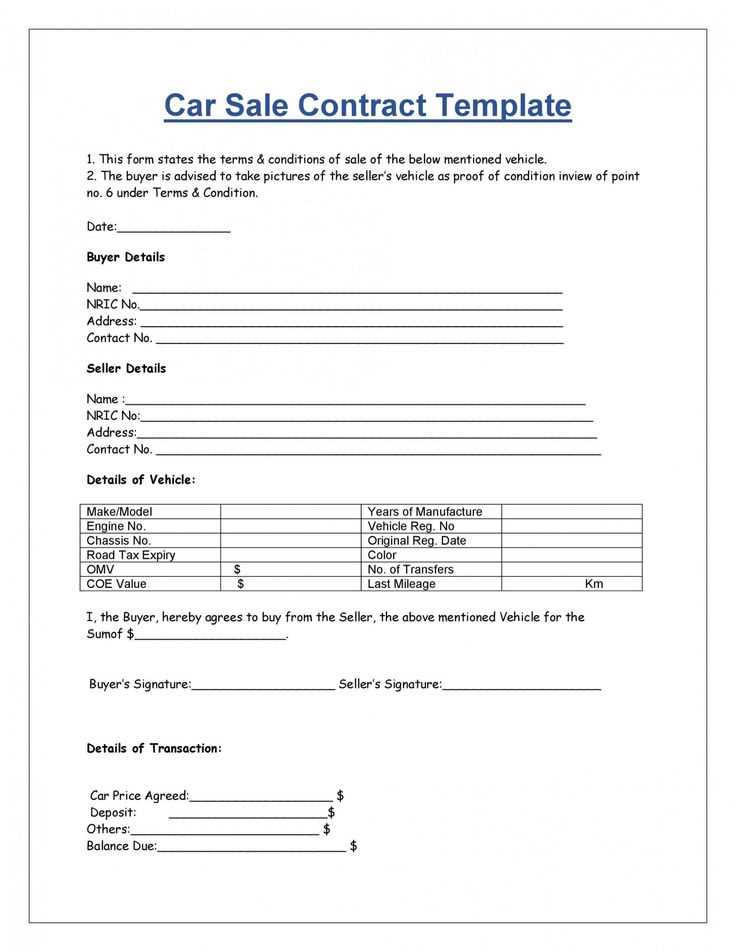
Creating a used car sale receipt is a straightforward yet significant step in any transaction involving the sale of a used vehicle. It serves as a legal document that confirms the transfer of ownership and outlines the terms of the sale. To make this process smooth and secure for both parties, having a well-organized and clear receipt template is highly recommended.
Start by including key details such as the vehicle identification number (VIN), make, model, and year of the car. It’s also important to note the sale price, date of transaction, and any warranty or “as-is” conditions. A solid template helps avoid confusion and ensures both buyer and seller are clear on the agreement.
Additionally, you should have a section for both the buyer’s and seller’s information, including full names, addresses, and signatures. Having both parties sign the document will validate the agreement. You can find reliable templates online in PDF format, which can be easily filled out and printed to provide a record of the transaction.
Used Car Sale Receipt Template PDF

Ensure your used car sale transaction is documented accurately with a clear, professional receipt. A good receipt serves as proof of sale and protects both parties involved. A PDF template makes it easy to create a formal, editable record without the need for manual paperwork. You can easily fill in the required details like car model, VIN, sale price, buyer’s information, and the date of the transaction.
Key Elements to Include
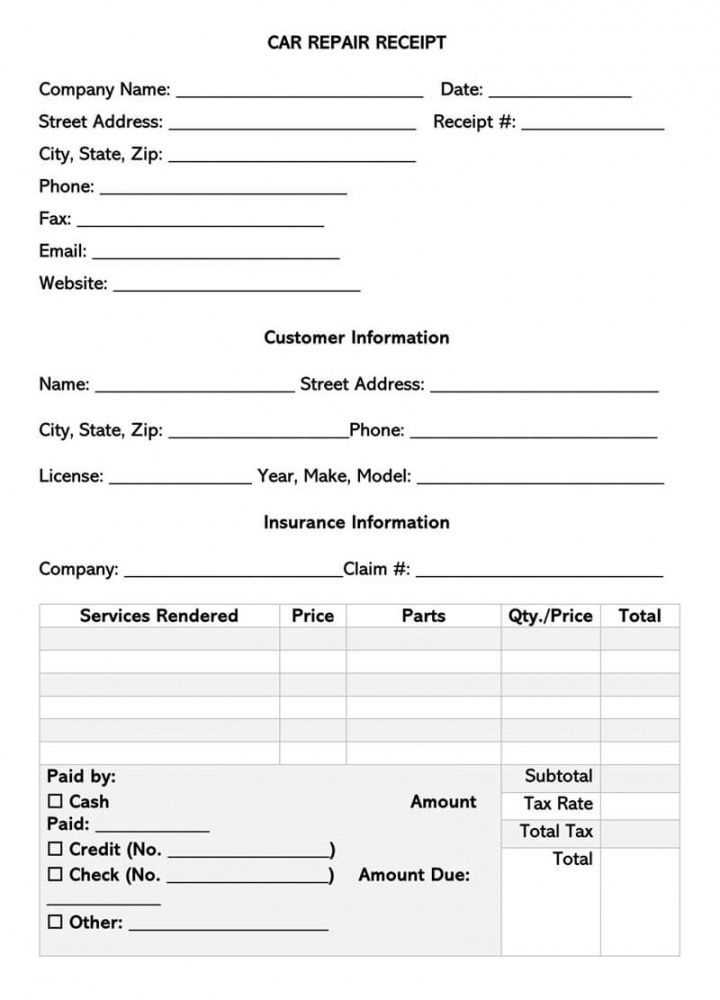
Include the following key sections in your template to make sure all necessary details are covered:
- Seller’s Information: Full name, address, and contact information.
- Buyer’s Information: Full name, address, and contact details.
- Vehicle Details: Make, model, year, VIN (Vehicle Identification Number), and mileage.
- Sale Price: The agreed upon price of the car, clearly stated.
- Payment Method: Specify whether the payment was made by cash, bank transfer, or another method.
- Signatures: Space for both the buyer and seller to sign, confirming the transaction.
Benefits of Using a PDF Template
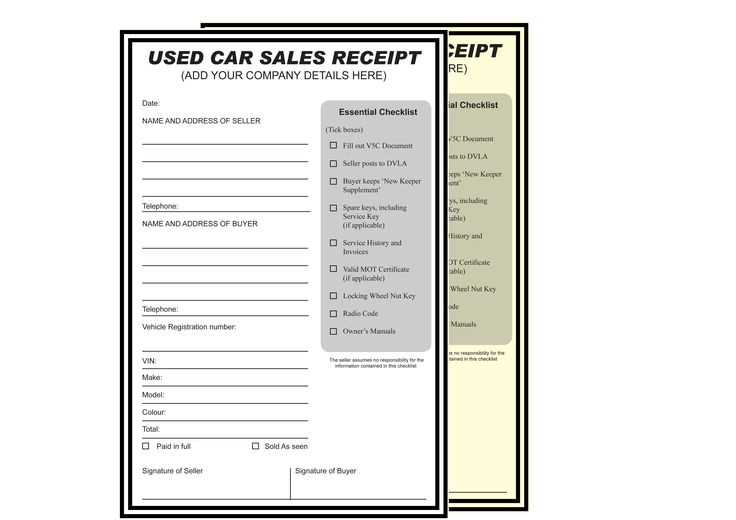
Using a PDF template provides multiple advantages. It ensures the format remains consistent and can easily be shared or printed. With editable fields, you can fill in the car details and transaction specifics quickly, reducing the chances of error. You can also keep a digital copy for your records while handing over a physical version to the buyer.
Having this template handy can streamline your sales process and give both parties a sense of security throughout the transaction.
Key Elements to Include in the Receipt
Buyer and Seller Information: Clearly list the full names, addresses, and contact details of both the buyer and seller. This helps in identifying the parties involved in case of any future disputes.
Vehicle Details: Include the make, model, year, VIN (Vehicle Identification Number), and mileage. These details help verify the car being sold and confirm its identity.
Sale Price: Clearly state the agreed-upon sale price. If any deposits or down payments were made, mention the amount and balance remaining.
Payment Method: Specify how the payment was made (cash, cheque, bank transfer, etc.), along with any transaction reference numbers or payment dates.
Date of Sale: Record the exact date when the sale occurred. This serves as a reference point for both parties.
Warranty or “As Is” Clause: If applicable, outline any warranty offered or state that the vehicle is being sold “as is” without any guarantees. This protects both parties legally.
Signatures: Both the buyer and seller should sign the receipt to confirm that the transaction is completed. This step helps to validate the document in case of future legal issues.
Customizing the Template for Specific Needs
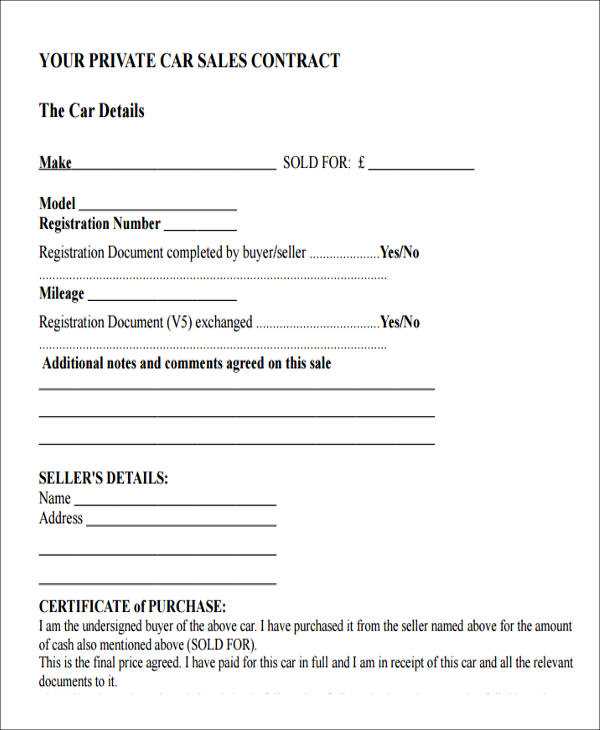
Adjust the template to reflect the specific details of your car sale. The key areas to modify include:
- Buyer and Seller Information: Add fields for names, addresses, and contact details. Include separate spaces for each party to ensure clarity.
- Vehicle Details: Modify sections to input the car’s make, model, year, VIN (Vehicle Identification Number), and mileage. This ensures accurate documentation.
- Payment Terms: Customize sections to outline payment methods, whether it’s cash, check, or financing options. Specify any deposits or installment agreements.
- Warranty or As-Is Clause: Adjust the template to clearly indicate whether the car is sold with a warranty or “as-is”. Add any terms regarding the car’s condition and possible repairs.
- Signatures: Include space for both parties to sign, as well as the date. Consider adding an area for a witness if needed.
For added flexibility, you can also integrate fields for optional add-ons like trade-ins, tax information, or special conditions specific to the sale. Be sure to keep the layout clear and organized for easy reference during the transaction.
Legal Considerations for the Sale Receipt
Ensure accurate details on the receipt. Include the full names and addresses of both the buyer and the seller. Specify the vehicle’s make, model, year, VIN (Vehicle Identification Number), and odometer reading. These details prevent any ambiguity and are critical in case of future disputes or verification needs.
Document the sale price. The agreed price should be clearly stated, along with any terms regarding payment method, down payment, or installments. This can protect both parties if there’s any confusion later on.
State “As Is” condition. If the vehicle is sold without warranty, include a clear disclaimer that the car is sold “as is,” meaning the seller is not responsible for future repairs or defects after the sale. Make sure the buyer acknowledges this clause by signing the receipt.
Include both parties’ signatures. Both the buyer and seller should sign the receipt, confirming agreement to all the terms. This legally binding step helps verify the authenticity of the transaction.
Comply with local regulations. Be aware of local laws regarding vehicle sales and include any additional documents, such as emissions certifications or proof of ownership, if required by your jurisdiction. Always check that all necessary legal requirements are fulfilled to avoid issues later.
